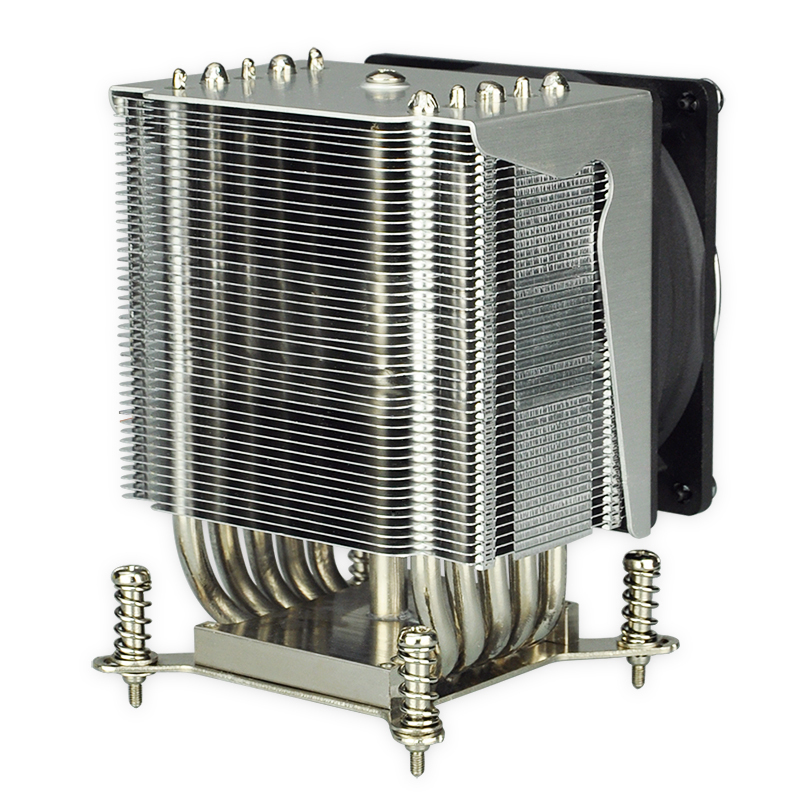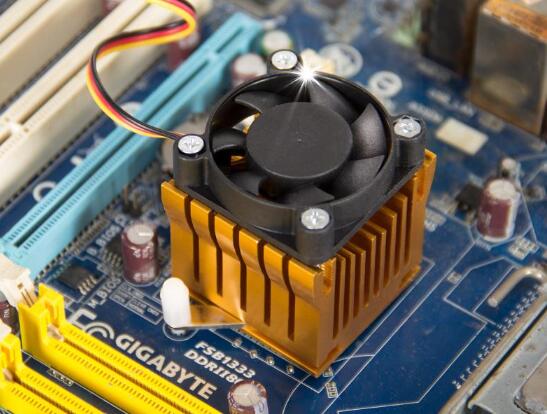Views: 13 Author: Site Editor Publish Time: 2023-07-11 Origin: Site


Whether you're a gamer, an engineer, or someone who loves to tinker with electronics, we can all agree on the importance of keeping our devices cool. That's where cooling plates come in! These handy little pieces of technology can help dissipate heat and keep your devices running smoothly for longer.
Not only do they improve performance and prevent overheating, but they can also extend the lifespan of your devices. So why keep your gadgets cool and maximize their potential with the advantages of using cooling plates?
Using cooling plates for heat dissipation offers a myriad of advantages. So, let’s dig in!
A cooling plate can be a game changer when cooling down a device or electronic component. Their high thermal conductivity allows them to dissipate heat quickly and efficiently.
This means they can easily transfer heat from one area to another, preventing potential damage to your device or its components. No one wants to deal with a device that overheats and shuts down in the middle of use, so investing in a cooling plate can be a great solution to ensure everything runs smoothly.
These plates are designed to quickly absorb and transfer heat away from electronic components, preventing them from overheating and causing damage. With efficient heat dissipation, you can be sure your electronics will last longer, perform better, and be much safer.
Cooling plates spread heat evenly and prevent thermal hotspots, which can cause damage to electronic components and reduce their lifespan. Additionally, uniform heat distribution ensures that no single area of the cooling plate becomes overworked, which can result in premature failure.
Unlike other methods of heat dissipation, which can be expensive, cooling plates rely on simple technology and materials that are relatively cheap to manufacture. This makes it a practical and affordable option for many types of businesses.
Furthermore, cooling plates are gaining popularity due to the growing demand for energy-efficient products, as they aid in lowering energy consumption and minimizing costs.
These fragile plates make them easy to stack and arrange in tight spaces. They're ideal for small devices, such as smartphones or laptops, where every inch of space matters.
Despite their slim profile, cooling plates effectively dissipate heat—an essential factor for electronic devices that can overheat without proper ventilation. Plus, their lightweight quality makes them travel-friendly, perfect for people who need to keep their devices cool and functional.
Cooling plates are versatile and can be used in a variety of industries. Here’s a sneak peek.
Electronic devices produce heat during operations, which can cause damage to internal components unless adequately dissipated. Cooling plates are used in most electronics, from personal computers, laptops, smartphones, and servers, to provide efficient heat dissipation.
Heat sinks are used to disperse heat generated by high-performance computer processors to keep them from overheating. The cooling plates ensure efficient device operation, prevent damage to critical components, and increase device lifespan.
With sophisticated systems and new technologies used in modern cars, the high operating temperature of the engine and other components produces enormous heat. The heat must be dissipated accurately, or it can lead to a breakdown in the car's engine or other critical components, which reduces the efficiency and life span of these parts.
Cooling plates transfer heat away from engine components, clutches, and transmissions for enhanced performance, thus increasing engine life and reducing wear and tear on components.
Medical equipment generates heat during operation, which must be controlled to prevent damage to the equipment and patient. Cooling plates regulate the medical equipment's temperature, keeping it cool and functioning correctly.
Specifically, ultrasound machines, MRIs, and other imaging devices require accurate temperature control to minimize electronic interference and device failure.
Cooling plates comes in two types; passive cooling plates and active cooling plates. Let’s learn more about them.
If you've ever wished you could escape the sweltering summer heat, consider passive cooling plates as a solution. These innovative cooling plates help dissipate heat and cool your environment without needing power-hungry air conditioning units.
Moreover, they offer easy installation and are cheap, making them ideal for budget-oriented consumers. Whether you want to cool down your home, office, or personal space, passive cooling plates are a fantastic way to beat the summer's heat.
Active or thermoelectric cooling plates are becoming popular for keeping electronic devices at safe temperatures, such as laptops and gaming consoles.
These plates use a technology that transforms electric current into a temperature difference between two sides of a plate, resulting in one side becoming cooler and the other becoming warmer.
Unlike traditional cooling plates, active cooling plates do not require a fan or moving parts, making them both silent and efficient. Plus, they're incredibly portable and easy to use - simply place them under your device and let them work their magic.
It’s imperative to study them before finalizing them. Here’s what you need to consider:
Different materials have varying heat conductivity and thermal resistance levels, affecting their cooling effectiveness. Copper and aluminum are two of the most popular materials for cooling plates, as they have high thermal conductivity and are cost-effective.
However, copper is more expensive than aluminum and can tarnish and corrode. Other materials, such as graphite or diamond, are more expensive but offer even higher thermal conductivity. When choosing a material, it's also essential to consider its durability and compatibility with your device.
The larger the plate, the greater its cooling capacity. However, larger plates can be more expensive and may not be practical if your device has limited space.
Besides, the thickness of the plate can affect its heat conductivity, so choosing a thickness that strikes a balance between cooling efficiency and practicality is imperative.
The thermal resistance of a material refers to its capacity to impede the flow of heat. When choosing a cooling plate, it's crucial to consider both the thermal resistance of the plate itself and the thermal interface material (TIM) that you'll be using to bond the plate to your device.
The TIM should have low thermal resistance and be compatible with the plate and the device. Some common TIMs include thermal paste, thermal grease, and thermal pads.
The performance requirements of your device will also influence your choice of the cooling plate. If you're working with a high-powered device that generates much heat, you'll need a cooling plate with a higher cooling capacity and more excellent thermal conductivity.
If you're working with a less demanding device, you can get by with a more basic cooling plate. It's vital to understand the requirements of your device and choose a cooling plate that can meet those requirements.
Cooling plates are essential for keeping electronic devices and components at safe temperatures, and the right cooling plate can make a massive difference in performance. At Kingka Tech, we provide a wide range of cooling plates to suit any application.
Our cooling plates are made from high-quality materials and have outstanding thermal conductivity.